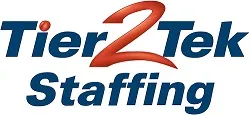Systems Administrator Interview Questions with Answers

When hiring a Systems Administrator, it’s crucial to assess both their technical acumen and their ability to manage the systems that keep your business running smoothly. These interview questions are designed to help hiring managers identify candidates with the right mix of skills and experience, while also providing job seekers with a preview of what they might be asked and how best to answer.
What is a RAID and what are the different types?
RAID (Redundant Array of Independent Disks) enhances data storage reliability and performance. Key types include:
- RAID 0: Increases speed, no redundancy.
- RAID 1: Mirrors data for redundancy.
- RAID 5: Balances performance and security with parity.
Describe the role of a Systems Administrator in managing network security.
A Systems Administrator secures networks by setting up firewalls, managing user access, and ensuring compliance with security protocols to protect data.
How do you ensure data backup and recovery processes are effective?
Effective backups involve regular, automated saves in multiple locations and frequent testing of recovery plans to ensure data integrity.
What tools or software do you typically use for system monitoring?
Common monitoring tools include:
- Nagios: For server and service monitoring.
- SolarWinds: For comprehensive IT management.
- Zabbix: For network and application monitoring.
How do you handle a server crash or system failure?
To manage a server crash:
- Diagnose the cause.
- Restore data from backups if needed.
- Fix underlying issues.
- Document the incident for improvement.
What are some common network protocols you work with?
Common protocols include HTTP for web traffic, FTP for file transfers, SMTP for email, and SNMP for network management. Understanding and managing these ensures efficient network communications.
How do you manage user permissions and access controls?
Access controls are managed through group policies in Active Directory, which set permissions based on user roles to ensure users have appropriate access to resources.
Explain how you would set up a new server.
Setting up a new server involves:
- Installing the operating system and necessary software.
- Configuring services and settings according to needs.
- Testing for security and performance issues.
- Deploying to the live environment.
What is Active Directory and why is it used?
Active Directory (AD) manages users and resources in a network. It allows for centralized domain management and simplifies access controls and resource allocation.
Can you explain DNS and its function?
DNS (Domain Name System) translates domain names to IP addresses, making it easier to access websites without remembering numeric addresses.
What is virtualization and how do you implement it?
Virtualization allows multiple virtual systems or applications to run on a single physical machine. Implementation typically involves choosing a platform like VMware or Hyper-V, setting up virtual machines, allocating resources, and ensuring proper network configurations.
How do you handle patch management?
Patch management involves regularly updating software to fix vulnerabilities. This process includes assessing patch urgency, testing updates in a controlled environment, deploying them to production systems, and monitoring for issues.
Describe a time you optimized server performance. What steps did you take?
Optimizing server performance might involve:
- Analyzing performance metrics.
- Upgrading hardware or tuning configurations.
- Implementing caching or load balancing techniques.
- Monitoring improvements and making adjustments as necessary.
What is the difference between IaaS, PaaS, and SaaS?
- IaaS (Infrastructure as a Service) provides virtualized physical computing resources over the Internet.
- PaaS (Platform as a Service) offers hardware and software tools over the internet, typically for application development.
- SaaS (Software as a Service) delivers applications over the Internet, accessible through a web browser without installation or maintenance.
How do you ensure network security from external threats?
Ensuring network security involves:
- Implementing strong firewalls and intrusion detection systems.
- Securing Wi-Fi networks with encryption.
- Educating users about phishing and security best practices.
- Regularly updating security protocols and software.
Can you describe what a disaster recovery plan involves?
A disaster recovery plan includes:
- Identifying critical IT systems and networks.
- Establishing backup and restore procedures.
- Testing the plan to ensure functionality.
- Updating the plan based on test results and changing business requirements.
Explain the importance of system logs and how you use them.
System logs are crucial for diagnosing problems, monitoring system performance, and ensuring network security. They are used to track user activities, system errors, and security incidents, which helps in forensic analysis and compliance audits.
What methods do you use for securing data transmissions?
Securing data transmissions can be achieved through:
- Encryption: Encrypting data before transmission.
- VPN: Using Virtual Private Networks for secure remote access.
- TLS/SSL: Employing protocols like TLS or SSL for securing web and email communications.
How do you manage large-scale deployments?
Large-scale deployments require careful planning, staging, and execution. This involves:
- Developing a deployment plan that outlines tasks, timelines, and responsibilities.
- Testing the deployment process in a controlled environment.
- Monitoring the deployment for any issues.
- Optimizing the process based on feedback and results.
What is containerization and how does it differ from virtualization?
Containerization involves encapsulating an application and its dependencies into a container that can run on any system. Unlike virtualization, which virtualizes hardware, containerization virtualizes the operating system, making it more efficient and scalable. Tools like Docker are commonly used for containerization.
Describe your experience with cloud services.
A response might include:
- Implementing and managing cloud-based solutions using platforms like AWS, Azure, or Google Cloud.
- Migrating applications and data to the cloud.
- Optimizing cloud resources for cost, performance, and security.
How do you monitor network performance and identify bottlenecks?
Monitoring network performance typically involves:
- Using tools like Wireshark or SolarWinds to analyze traffic.
- Identifying high latency or bandwidth issues.
- Implementing solutions such as QoS (Quality of Service) adjustments or bandwidth upgrades.
How do you configure a VPN and what are its key benefits?
Configuring a VPN involves setting up a secure tunnel between devices and the network to encrypt data transmissions. Key benefits include enhanced security, remote access to network resources, and safeguarded data privacy across public networks.
What are best practices for server hardening?
Server hardening best practices include:
- Minimizing unnecessary services to reduce vulnerabilities.
- Applying security patches and updates promptly.
- Implementing strong access controls and authentication methods.
- Regularly auditing and monitoring server activities.
Describe how you would respond to a ransomware attack on company servers.
Responding to a ransomware attack involves:
- Isolating affected systems to prevent spread.
- Assessing the scope and impact of the damage.
- Restoring data from clean backups.
- Updating security measures to prevent future attacks.
What are the differences between symmetric and asymmetric encryption? How are they used?
Symmetric encryption uses the same key for encryption and decryption, making it fast but less secure for distribution. Asymmetric encryption uses a pair of public and private keys, enhancing security for data exchanges. Symmetric is often used for bulk data encryption, while asymmetric is used for secure key exchange and digital signatures.
How do you manage and prioritize software updates and patches?
Managing and prioritizing software updates involves:
- Evaluating the criticality of updates based on security risks.
- Testing updates in a sandbox environment to ensure compatibility.
- Scheduling and deploying updates during off-peak hours to minimize business disruption.
What is a SAN, and how does it differ from NAS?
SAN (Storage Area Network) and NAS (Network Attached Storage) are both network storage solutions. SAN provides block-level storage and is ideal for performance-intensive applications like databases, whereas NAS provides file-level storage and is suited for data sharing among multiple users.
Explain how you secure mobile devices accessing the corporate network.
Securing mobile devices involves:
- Implementing Mobile Device Management (MDM) solutions to control and secure devices.
- Enforcing security policies like strong passwords and device encryption.
- Regularly updating and monitoring devices for compliance.
How do you ensure business continuity in case of a major IT failure?
Ensuring business continuity involves:
- Developing and maintaining a comprehensive business continuity plan.
- Regularly testing backup systems and disaster recovery processes.
- Training staff on emergency procedures and roles.
What strategies do you use for troubleshooting system issues?
Effective troubleshooting strategies include:
- Identifying the symptoms and isolating the source of the problem.
- Using diagnostic tools like system logs, monitoring software, and command-line utilities.
- Applying fixes and monitoring the system for stability.
Explain how you manage software licenses across the organization.
Managing software licenses involves:
- Tracking software usage and compliance using tools like SCCM (System Center Configuration Manager).
- Auditing software installations and usage regularly.
- Negotiating license agreements and managing renewals to ensure compliance and optimize costs.
What is your approach to maintaining system security against internal threats?
Maintaining security against internal threats involves:
- Implementing strict access controls and user permissions.
- Conducting regular audits of user activities and resource access.
- Educating employees on security policies and best practices.
How do you ensure compliance with IT policies and regulations?
Ensuring compliance includes:
- Understanding relevant regulations such as GDPR, HIPAA, or SOX.
- Implementing policies and controls that meet regulatory requirements.
- Conducting regular reviews and audits to ensure ongoing compliance.
Common Technologies Used by Systems Administrators

Systems Administrators leverage a variety of technologies to manage and maintain IT infrastructures effectively. Here are some common tools and technologies they typically use:
- Operating Systems: Proficiency in Windows Server, Linux, and Unix is essential for managing various server environments.
- Active Directory: Used for managing networked resources, creating and administering domain user accounts, permissions, and access to resources.
- Virtualization Tools: VMware, Hyper-V, and Oracle VirtualBox are crucial for creating and managing virtual machines.
- Networking Tools: Understanding of Cisco, Juniper, or similar networking equipment, as well as network protocols such as TCP/IP, DNS, and DHCP.
- Backup Software: Tools like Veeam, Acronis, and Symantec Backup Exec are used to ensure data integrity and recovery.
- Security Tools: Firewalls, antivirus software, and intrusion detection systems (IDS) such as Norton, McAfee, and Palo Alto Networks.
- Monitoring Software: Applications like SolarWinds, Nagios, and Zabbix help monitor network and system performance.
- Scripting Languages: Knowledge of scripting in Bash, PowerShell, Python, or Perl to automate routine tasks and processes.
- Database Systems: Familiarity with SQL Server, MySQL, and Oracle to manage data storage solutions.
- Cloud Services: Experience with cloud platforms like AWS, Microsoft Azure, and Google Cloud Platform for managing cloud-based resources and services.
Key Expertise Areas for Systems Administrators
Systems Administrators require a diverse set of skills to manage and optimize IT infrastructures effectively. Here are some common areas of expertise that are crucial for Systems Administrators:
- Network Management: Ability to configure, manage, and troubleshoot network infrastructure including routers, switches, and firewalls.
- Server Administration: Proficiency in maintaining server health, deploying server resources, and managing server-based applications and services.
- Security Protocols: Knowledge of security measures such as VPNs, encryption, firewalls, and threat detection systems to protect data and infrastructure.
- Data Backup and Recovery: Skills in implementing and testing backup systems and disaster recovery plans to ensure data integrity and continuity.
- Virtualization Technologies: Experience with creating and managing virtual environments using tools like VMware, Hyper-V, and others.
- Cloud Services: Understanding of cloud infrastructure management, including services provided by AWS, Azure, and Google Cloud Platform.
- System Monitoring and Optimization: Ability to use monitoring tools to track system performance and apply optimizations for enhanced functionality.
- Scripting and Automation: Competency in writing scripts in languages like PowerShell, Bash, or Python to automate routine tasks and improve system efficiency.
- Database Management: Skills in managing databases using SQL Server, MySQL, Oracle, or other database technologies.
- Compliance and Security: Familiarity with regulatory compliance standards like GDPR, HIPAA, or ISO and implementing necessary security protocols.
Need to Hire a Systems Administrator?

At Tier2Tek Staffing, we understand the critical role Systems Administrators play in keeping your IT operations seamless and secure. Let us help you find the right expert quickly and efficiently.
